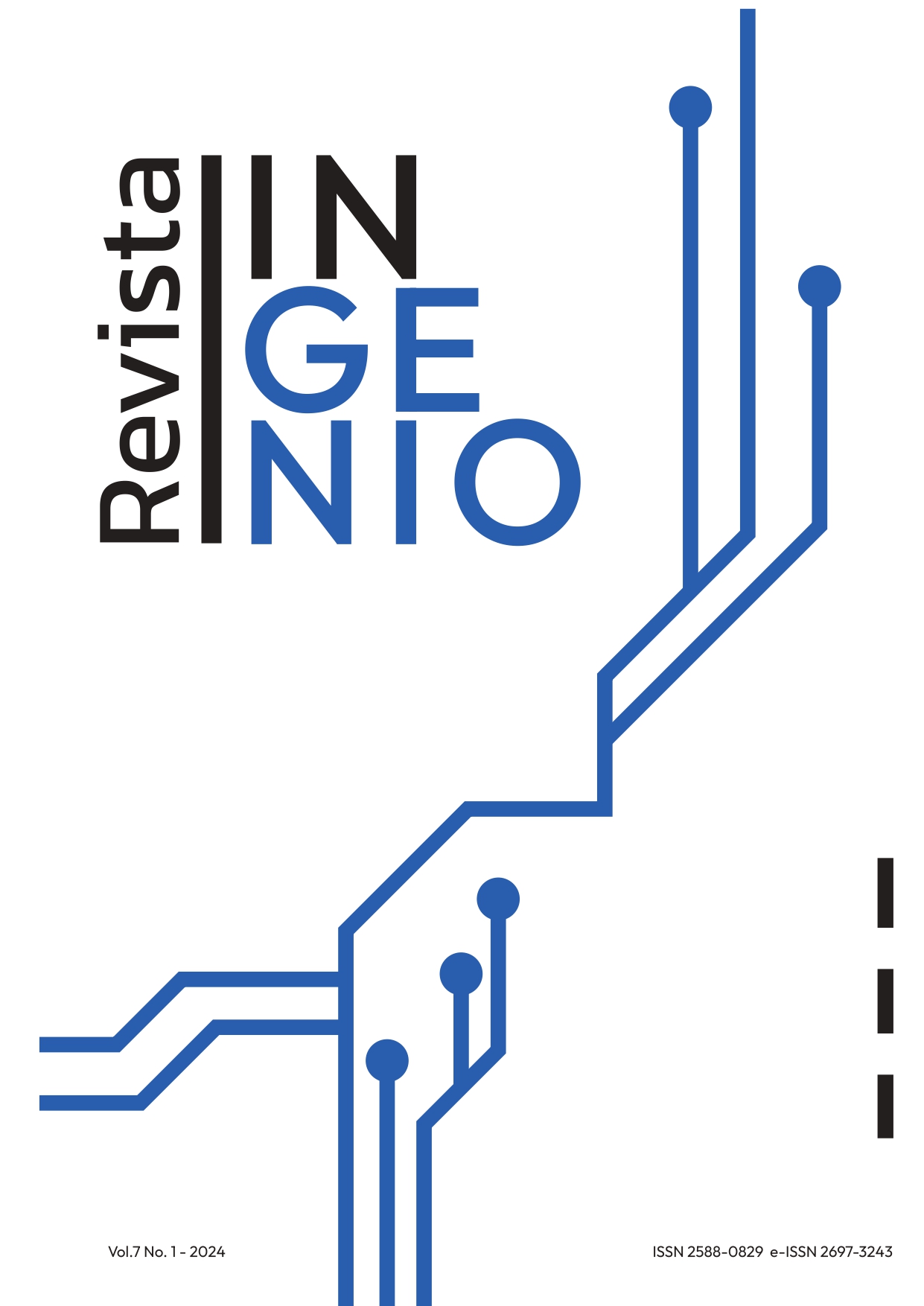Desarrollo del Marco Metodológico para la Calibración y Validación del Modelo Hidrodinámico del Sistema de Alcantarillado de la Facultad de Ingeniería y Ciencias Aplicadas
Contenido principal del artículo
Resumen
Los Sistemas de Drenaje Urbano (SDU) han existido desde épocas del Imperio Babilónico. Su objetivo es preservar y promover la salud pública, bienestar social, protección de inundaciones, contaminación de cuerpos receptores. El crecimiento poblacional en áreas urbanas, cambio climático, envejecimiento de las estructuras, provocan el colapso de esta infraestructura sanitaria e inundaciones. En la presente investigación se desarrolló un marco metodológico para evaluar el funcionamiento hidráulico del sistema de alcantarillado de una cuenca piloto. Mediante tres tipos de información, espacial, temporal y topográfica, se generaron principalmente lluvias de diseño, lluvias históricas, caudales y patrones de agua residual, topología del SDU del área de estudio, usos, cobertura del suelo, DTM, DSM, ortofoto, consecuentemente el modelo hidrodinámico 1D de drenaje urbano fue construido. Mediante mediciones hidrometeorológicas registradas en sensores ultrasónicos para medir calados y velocidades del flujo en las tuberías y un pluviómetro, se calibro y valido el modelo de drenaje.
Descargas
Métricas
Detalles del artículo

Esta obra está bajo una licencia internacional Creative Commons Atribución-NoComercial-SinDerivadas 4.0.
Citas
Butler D. Urban Drainage. Third Edition. London: Spon Press; 2009, p.3-4. DOI: https://doi.org/10.1093/oso/9780199562220.002.0003
Novak P, G. V. Hydraulic Modelling an Introduction. OXON, USA: Spon Press, 2010; p.392-394.
Waslki T., et al. Wastewater collection System Modeling and Design. Pennsylvania: Bentley Institute Press; 2007, p.144-148.
Paredes D. Hydraulic Analysis of Urban Drainage Systems with Conventional Solutions and Sustainable Technologies. Journal of Water Management Modeling; 2018, CHI JWMM 2018:C440. DOI: https://doi.org/10.14796/JWMM.C440
Kleidorfer M. Uncertain calibration of urban drainage models. Innsbruck Austria; 2009, p. 40-46.
EMAAP-Q. Normas de Diseño de Sistemas de Alcantarillado para la EMAAP-Q. Quito: V&M Gráficas; 2009, p.73.
Seyoum S. Framework for Dynamic Modelling of Urban Floods at different Topographical Resolutions. Delft, The Netherlands: UNESCO-IHE; 2013, p.32-36.
Price R., Vojinovic Z. Urban Hydroinformatics. London: IWA Publishing; 2011, p.68-78. DOI: https://doi.org/10.2166/9781780400945
Finney K., Gharabaghi. Using the PCSWMM 2010 SRTC tool to Design a Compost Biofilter for Highway Stormwater Runoff Treatment. Journal of Water Management Modeling; 2011, JWMM R241-09. DOI: https://doi.org/10.14796/JWMM.R241-09
Gujarati, D. N. Basic econometrics. Fourth Edition. Boston: McGraw Hill Higher Education; 2003, p.202-250.
Vojinovic Z., Abbott M. Flood Risk and Social Justice. London: IWA Publishing; 2012, p.275.
Pascual F., Torres M. Temprano J., Sánchez J. Sustainable Urban Drainage System (SUDS) modeling supporting decision-making: A systematic quantitative review. ELSEVIER. Science of the Total Environment 806(2022)150447. DOI: https://doi.org/10.1016/j.scitotenv.2021.150447





